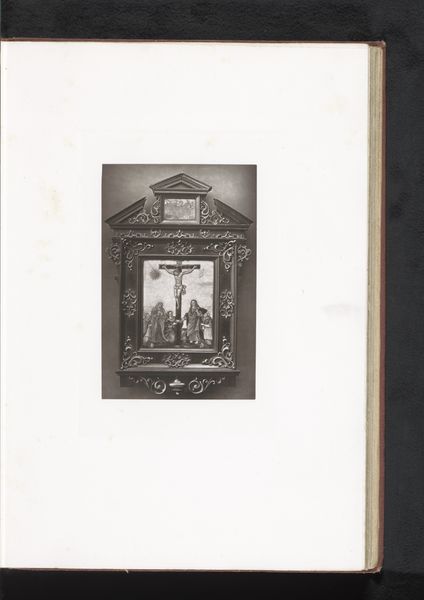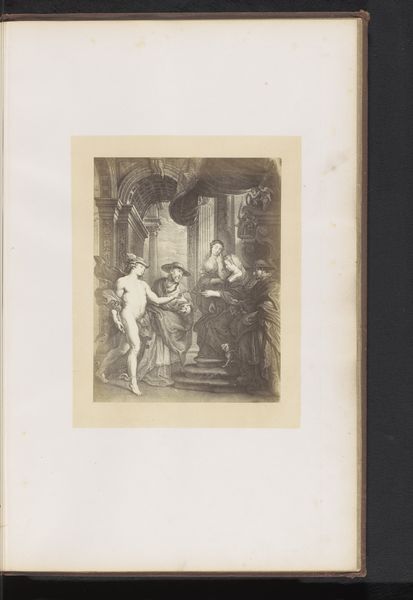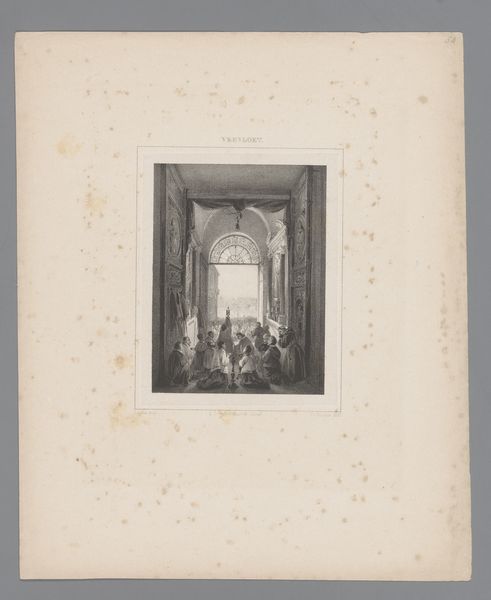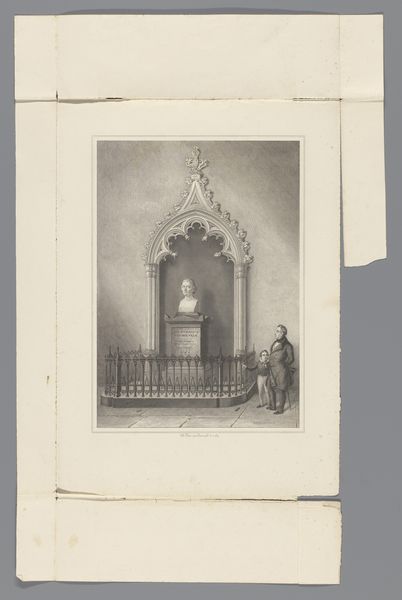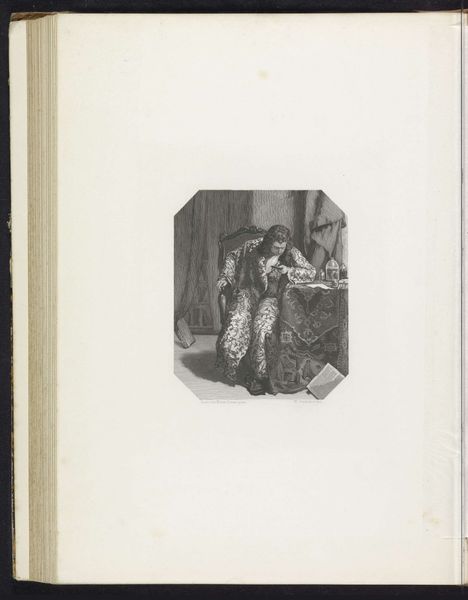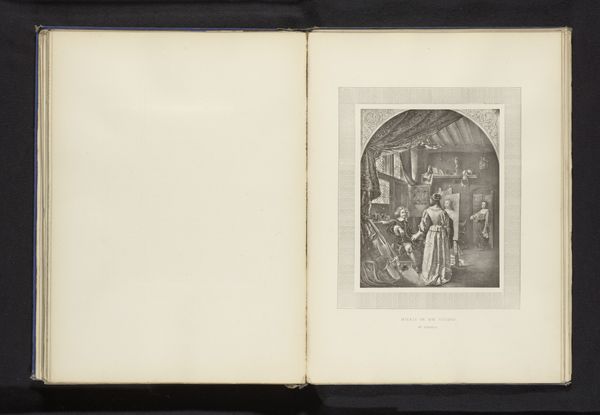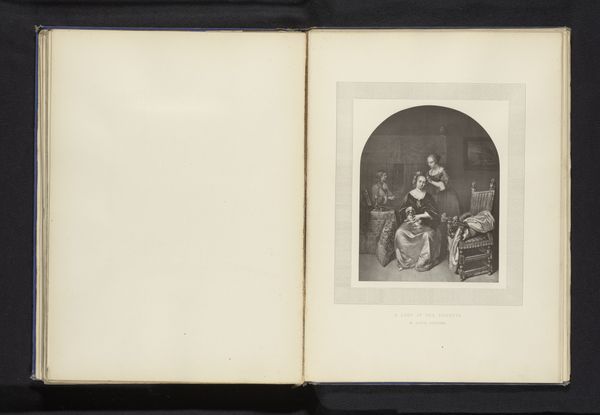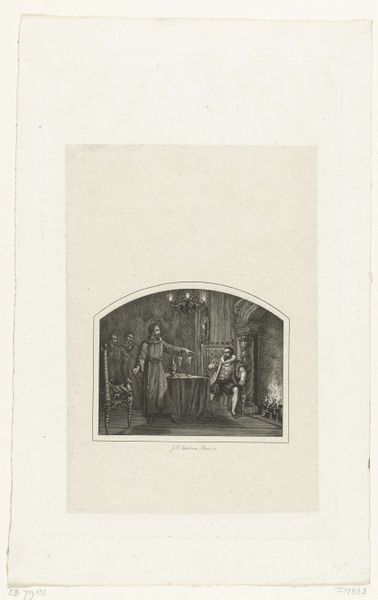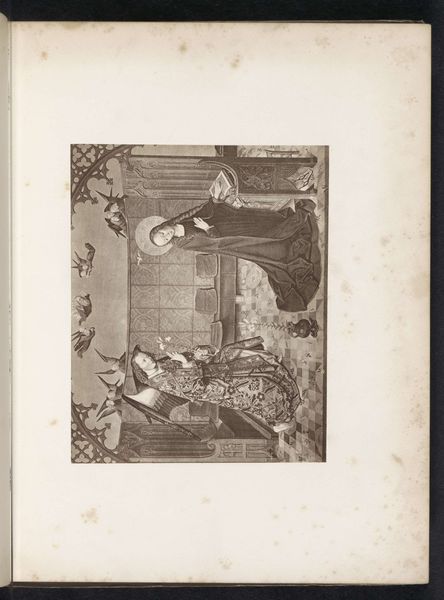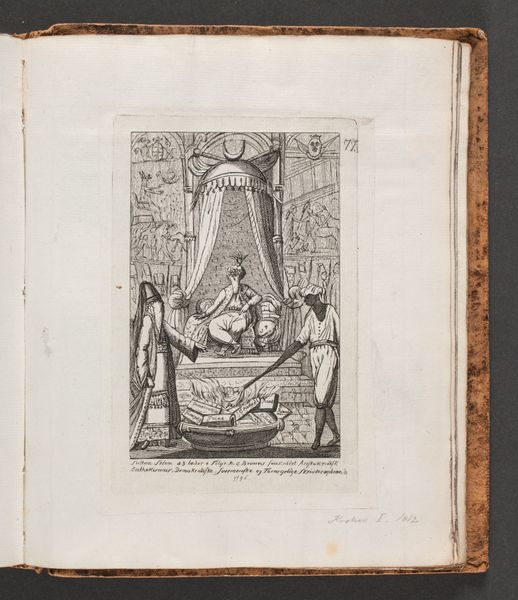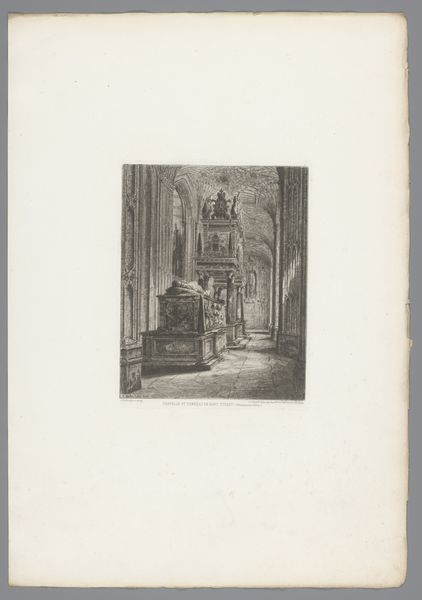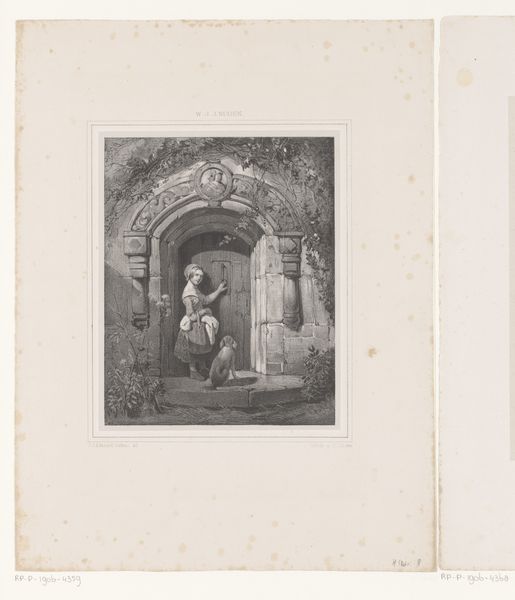
drawing, print, paper, ink
#
drawing
# print
#
paper
#
ink
#
history-painting
#
academic-art
#
realism
Dimensions: height 235 mm, width 190 mm
Copyright: Rijks Museum: Open Domain
Curator: Looking at this print from the Rijksmuseum collection, we see "The Mausoleum of Prince William in Delft, circa 1625," rendered in ink on paper by Hendrik D. Jzn Sluyter, sometime between 1865 and 1870. Editor: Oh, instantly I’m transported to a cathedral's hush. It’s a dance of light and shadow – a somber yet strangely uplifting feeling, wouldn't you say? The weight of history seems etched into every line. Curator: Absolutely. The artist is using realism to represent a very specific memorial and location. What symbolic details stand out to you? Editor: Those spires reaching upwards give a sense of reaching for something beyond, aspiring towards heaven – very classic. Then you’ve got those little figures down below – they feel like representations of us mortals, dwarfed by the sweep of history. And there’s this very clever use of light, really enhancing a sort of emotional grandeur… It makes you feel small but somehow connected. Curator: Precisely. Funerary art from this period often served as political and religious statements, connecting rulers to divine authority. Notice the classical elements, the columns and figures, reminiscent of ancient Roman tombs? Sluyter is capturing not only the physical space but layers of meaning built into this monument. Editor: So, this isn’t just a drawing; it’s a statement about power, legacy, faith. It really feels like walking through history! Curator: Indeed, the visual weight Sluyter gives the mausoleum itself is remarkable; It evokes both authority and eternity, while underscoring the earthly remains. Editor: Thinking about those kneeling figures—they aren’t just mourning. They’re witnessing history, much like we are today standing before this image. I like that circle it completes. Curator: An elegant observation that reminds us how art serves as a continuous thread linking past and present, wouldn't you agree? Editor: Yes, indeed. History isn’t something locked in a vault – it echoes; it invites us into a grand story. Curator: I'll certainly be reflecting more on echoes and invitations the next time I come face-to-face with sepulchral imagery.
Comments
No comments
Be the first to comment and join the conversation on the ultimate creative platform.
